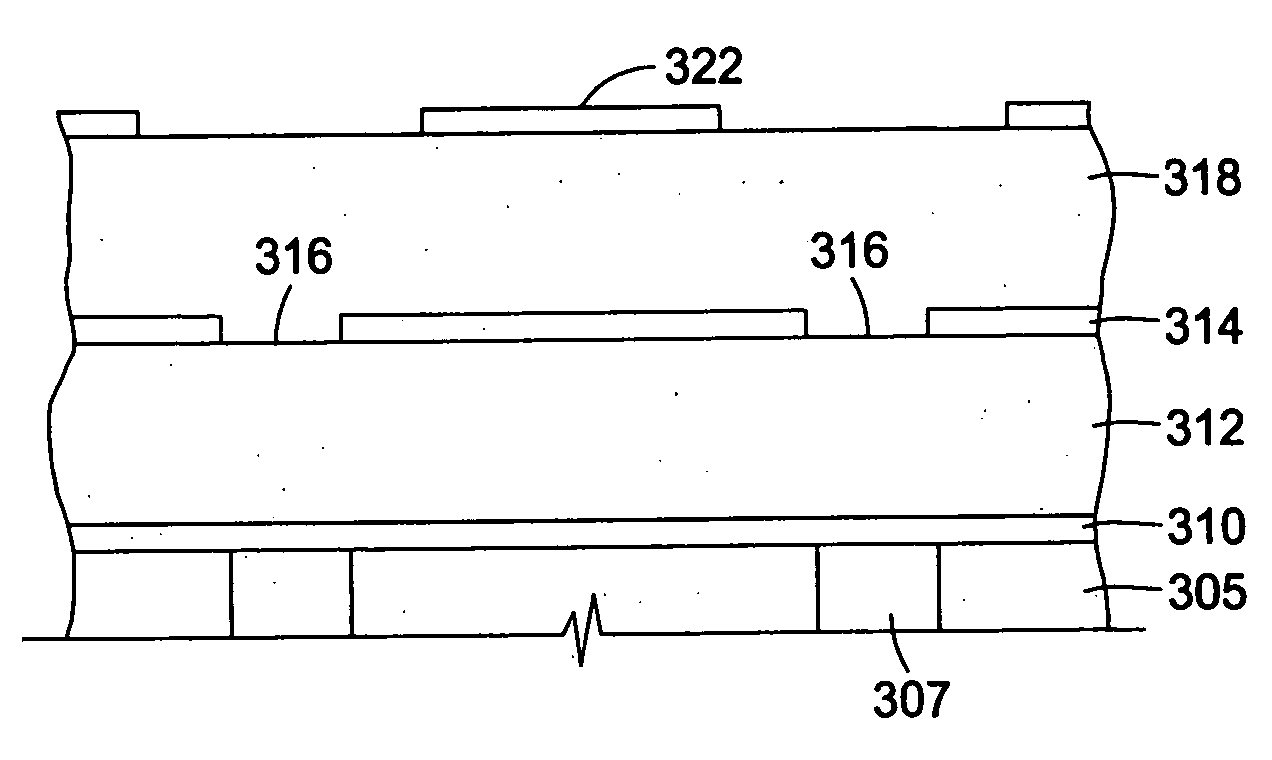Method of depositing an amorphous carbon film for etch hardmask application
a technology of amorphous carbon film and etch hardmask, which is applied in the field of manufacturing integrated circuits, can solve the problems of low k material brittleness, and difficulty in producing features with little or no surface defects or feature deformation
- Summary
- Abstract
- Description
- Claims
- Application Information
AI Technical Summary
Benefits of technology
Problems solved by technology
Method used
Image
Examples
examples
[0078] The following examples demonstrate various embodiments of the adhesion processes described herein as compared to a standard interlayer stack to illustrate the improved interlayer adhesion. The samples were undertaken using a chemical vapor deposition chamber, and in dual processing station Producer™ 200 mm and 300 mm processing chambers, which includes a solid-state dual frequency RF matching unit with a two-piece quartz process kit, both fabricated and sold by Applied Materials, Inc., Santa Clara, Calif.
[0079] Amorphous carbon films were deposited as follows. An amorphous carbon layer was deposited with a single frequency and helium carrier gas by introducing propylene, C3H6, at a flow rate of about 1000 sccm and helium at a flow rate of about 650 sccm, optionally maintaining the chamber at a substrate temperature of about 350° C., maintaining a chamber pressure of about 7 Torr, positioning a gas distributor at about 240 mils from the substrate surface, and applying a RF po...
PUM
| Property | Measurement | Unit |
|---|---|---|
| frequency | aaaaa | aaaaa |
| dielectric constant | aaaaa | aaaaa |
| imaging wavelengths | aaaaa | aaaaa |
Abstract
Description
Claims
Application Information
 Login to View More
Login to View More - R&D
- Intellectual Property
- Life Sciences
- Materials
- Tech Scout
- Unparalleled Data Quality
- Higher Quality Content
- 60% Fewer Hallucinations
Browse by: Latest US Patents, China's latest patents, Technical Efficacy Thesaurus, Application Domain, Technology Topic, Popular Technical Reports.
© 2025 PatSnap. All rights reserved.Legal|Privacy policy|Modern Slavery Act Transparency Statement|Sitemap|About US| Contact US: help@patsnap.com



